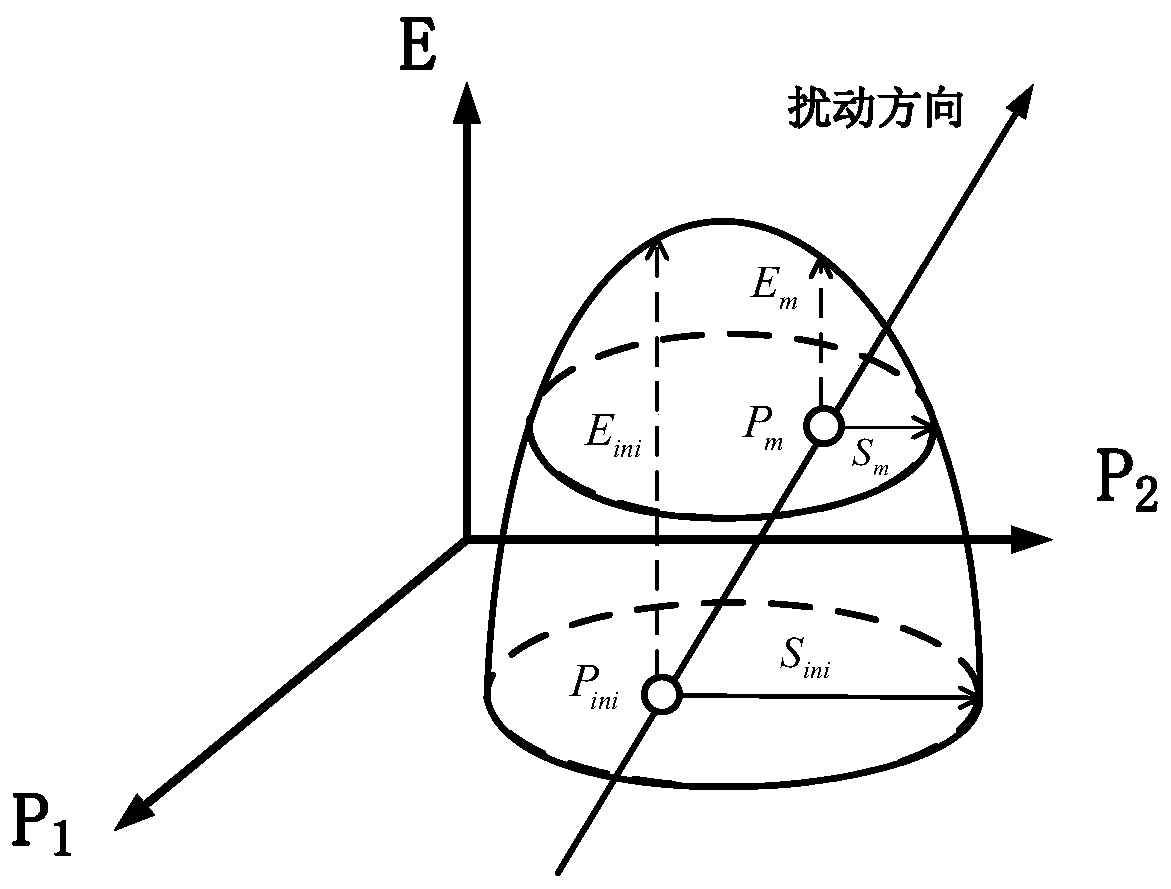Doubly-fed fan control parameter optimization method and system based on energy stability domain
A technology for controlling parameters and doubly-fed wind turbines, applied in the control system, generator control circuit, control generator, etc., to achieve the effect of improving grid connection capability and improving power angle stability
- Summary
- Abstract
- Description
- Claims
- Application Information
AI Technical Summary
Problems solved by technology
Method used
Image
Examples
Embodiment 1
[0053] This embodiment discloses a method for optimizing the control parameters of double-fed wind turbines based on the energy stability domain, such as figure 1 shown, including the following steps:
[0054] Step 1. Establish the energy stability domain of the wind power grid-connected system and determine the stability boundary;
[0055] Step 2. After the disturbance occurs for a period of time, calculate the energy distance from the current operating point to the boundary of the energy stability domain, and construct the energy distance stability condition of the system after the disturbance; the energy distance is the energy distance from the current operating point to the stable boundary along the disturbance direction distance;
[0056] Step 3. With the goal of energy distance stability, the objective function constraints are established, and the improved plant simulation growth algorithm is used to obtain and output the key control parameters of the optimized double-f...
Embodiment 2
[0093] This embodiment discloses a doubly-fed fan control parameter optimization system based on the energy stability domain, such as Figure 5 as shown,
[0094] It includes an energy stability domain establishment module, an energy distance calculation module, a control parameter optimization module and a result output module.
[0095] The energy stability domain establishment module is used to establish the energy stability domain of the wind power grid-connected system according to the collected data of the wind power grid-connected system, and determine the boundary of the energy stability domain;
[0096] The collected wind power grid-connected system data includes wind power grid-connected system synchronous generators, double-fed wind turbines, network line parameters and load data, node operation data during system oscillation, and energy stability region boundary data determined by node injection disturbance power.
[0097] The energy distance calculation module is ...
Embodiment 3
[0101] by Image 6 Taking the improved IEEE 4-machine 11-node system as an example, the key control parameters of double-fed wind turbines: K P_PLL = 1 p.u.,K ω = 1 p.u.,T ω = 0.1 p.u.;
[0102] For this system, the stability margin H 0 (P 0 ,E 0 ) is set to 0.1MW*s; The set value needs to ensure that the adjustment of the control parameters is within a certain range: K P_PLL >0.1p.u.,K ω >0.1p.u., T ω <10 p.u.
[0103] 1) Stable working condition
[0104] A power fluctuation of 100MW occurs at node 1 for a duration of 0.1s. After calculation, the optimized parameters are: K P_PLL =0.85p.u., K ω =0.72 p.u., T ω = 3.29 p.u. Comparison of power angle response curves before and after optimization of doubly-fed wind turbine control parameters Figure 7 shown. Depend on Figure 7 It can be seen that in this scenario, the wind power grid-connected system before and after parameter optimization can restore stability by itself. Through parameter optimization, the p...
PUM
 Login to View More
Login to View More Abstract
Description
Claims
Application Information
 Login to View More
Login to View More - R&D
- Intellectual Property
- Life Sciences
- Materials
- Tech Scout
- Unparalleled Data Quality
- Higher Quality Content
- 60% Fewer Hallucinations
Browse by: Latest US Patents, China's latest patents, Technical Efficacy Thesaurus, Application Domain, Technology Topic, Popular Technical Reports.
© 2025 PatSnap. All rights reserved.Legal|Privacy policy|Modern Slavery Act Transparency Statement|Sitemap|About US| Contact US: help@patsnap.com



